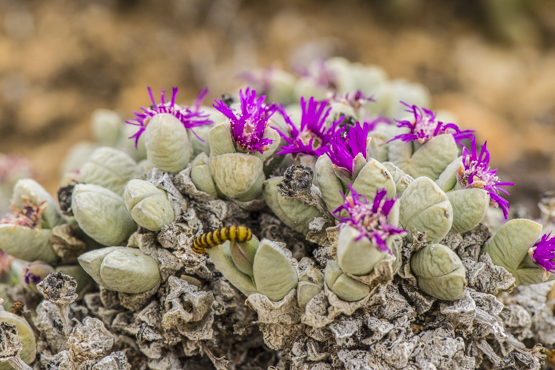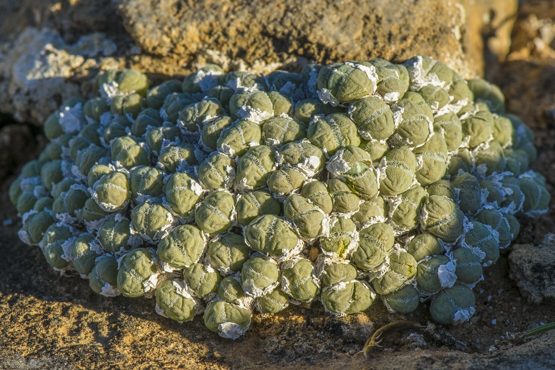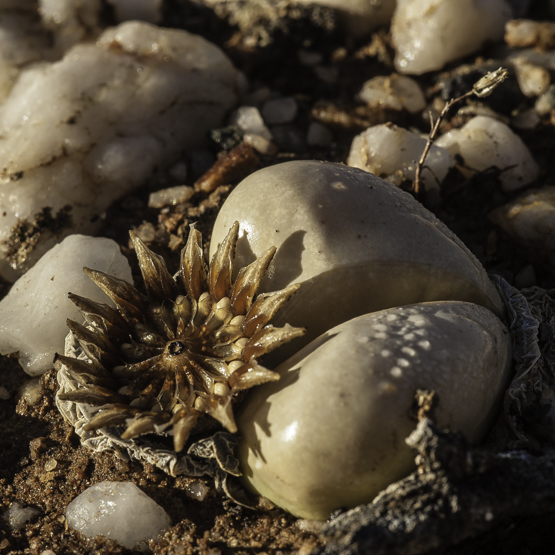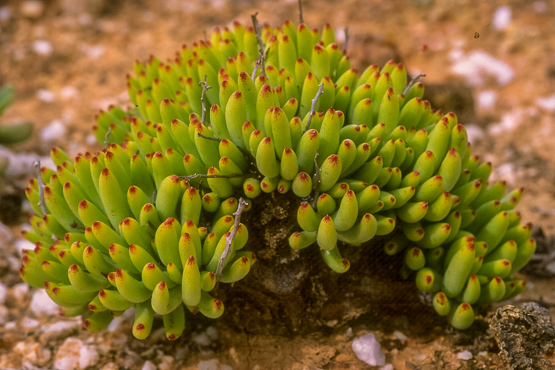Once you know that monile is the Latin word for a string of pearls and monilaria means a collection of strings of pearl, this repetitive tongue twister of a name may begin to make more sense.
But let’s forget about the name and look at the plants themselves.
The branches consist of flattish, rounded segments and may become up to 20 cm tall.
The flowers are to 4.5 cm in diameter, usually white (sometimes with a yellow tinge), with white, orange or purple filaments*.
They have a long stalk (to 10 cm tall), appear in July-August and are highly scented.
As a rule the plants grow fully exposed in loamy soil on quartz patches in the southernmost part of the Knersvlakte.
According to “MESEMBS OF THE WORLD”, Monilaria plants are very long-lived, possibly centuries.
* the thread-like part of the stamen
All pictures shown here were taken late July 2017.




















































